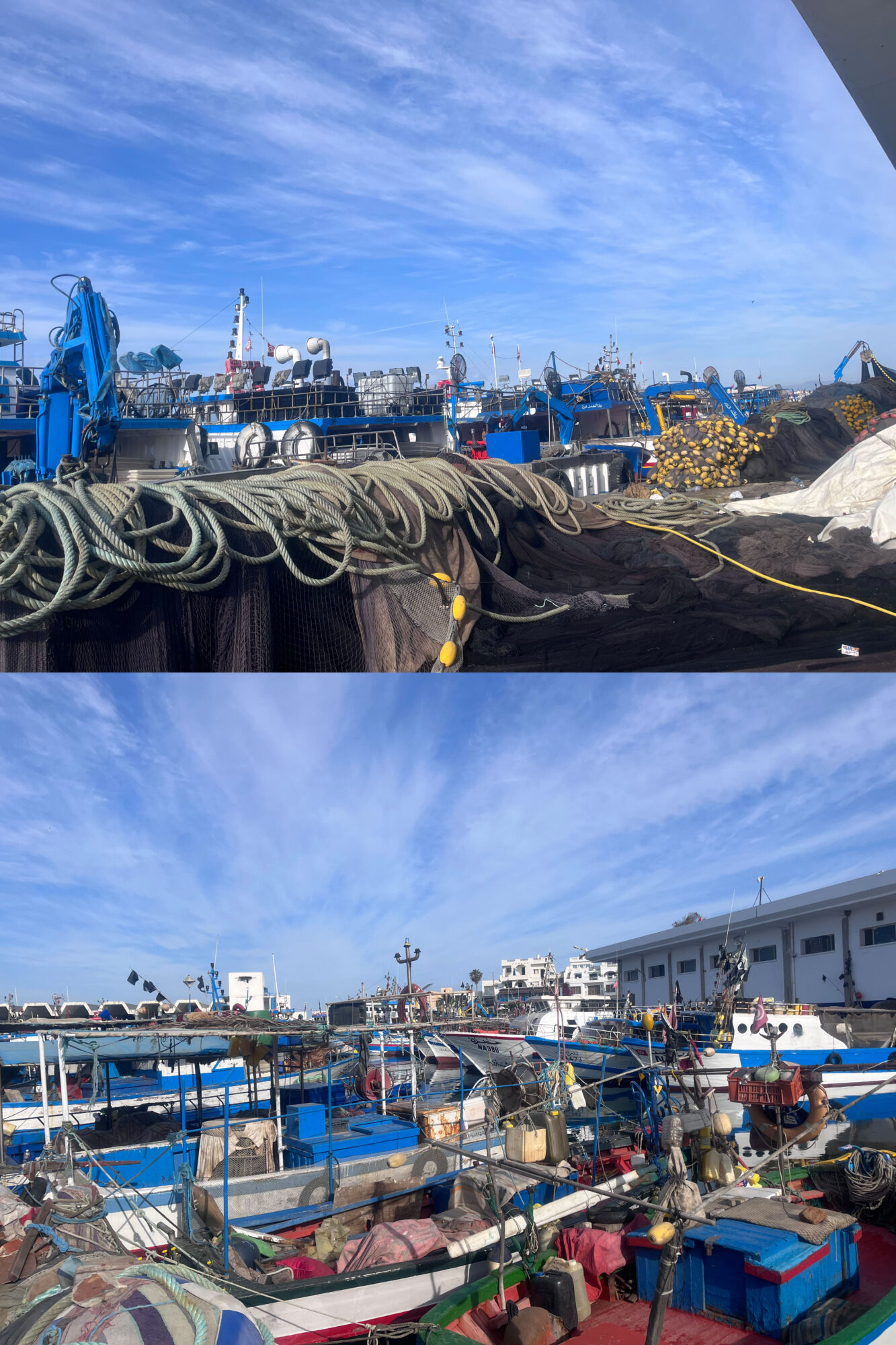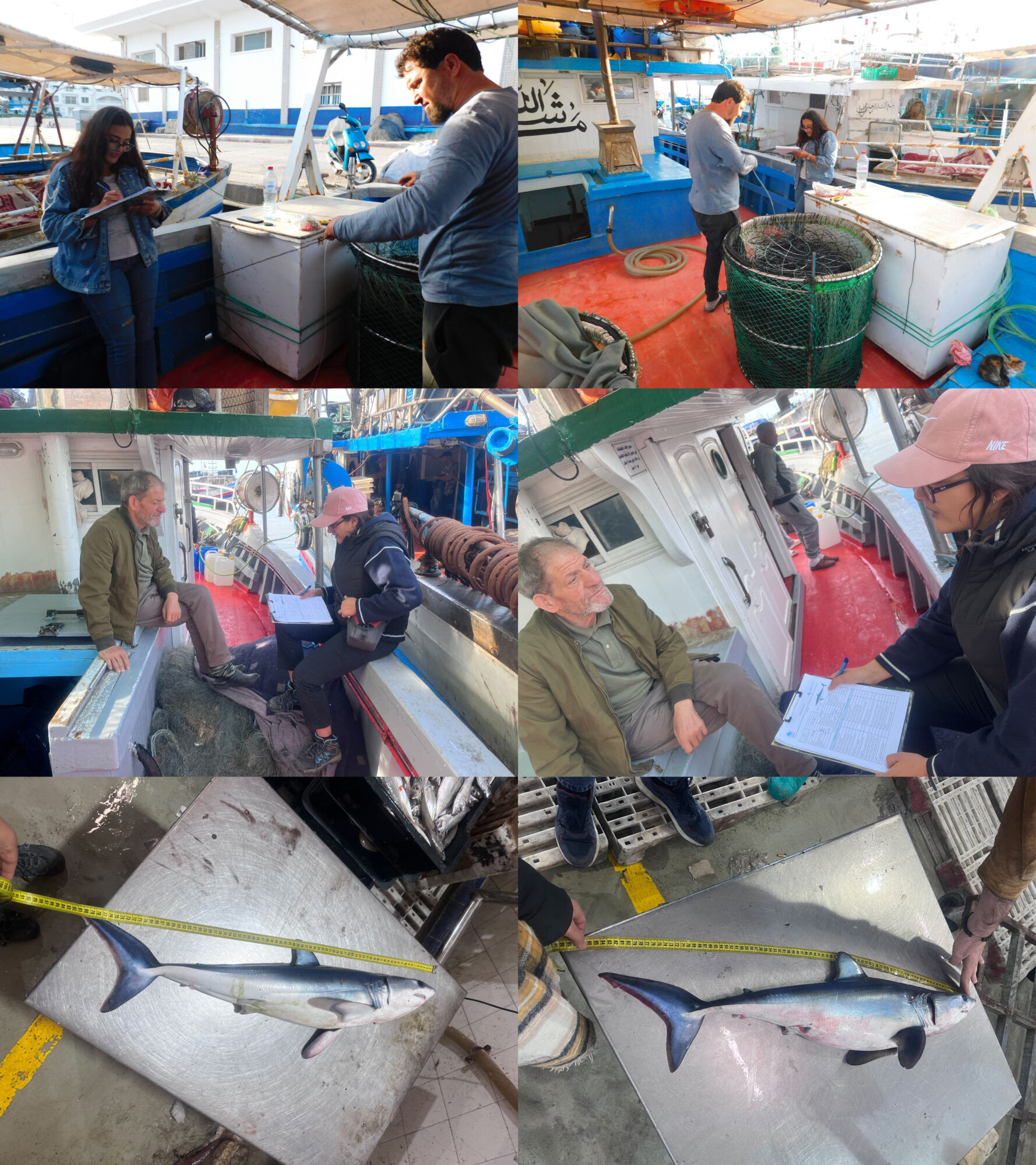Listening to the sea: first steps toward protecting the shortfin mako shark in the Gulf of Hammamet
The Gulf of Hammamet, located on the northeastern coast of Tunisia in the central Mediterranean Sea, is a biologically and economically important region. It features a narrow continental shelf that forms a transitional zone between northern and southern Tunisian waters. In 2023, this area accounted for around 58% of Tunisia’s fisheries production, according to the General Directorate of Fisheries and Aquaculture (DGPA), reflecting its importance as a key fishing ground. Its fishing fleet includes about 1,600 small-scale vessels, 84 bottom trawlers, and 179 purse seiners, all operating throughout the year in overlapping zones. This intense fishing activity puts pressure on marine ecosystems and particularly affects vulnerable species.

Fishing fleet attached to the port of kelibia. Photo © Ichrak BOUZIDI
Among these species are sharks and rays, which play essential roles in maintaining the balance of marine ecosystems. This group of elasmobranchs is subject to increasing pressure due to anthropogenic activities, especially fishing. In the Gulf of Hammamet, various fishing gears such as nets, longlines, purse seine and trawls often unintentionally catch sharks and rays as bycatch. In recent years, landings of these species have increased, but little is known about the exact impact on their populations.

Active Small-scale vessels in the Gulf of Hammamet. Photo © Ichrak BOUZIDI
One of the most affected species is the shortfin mako shark (Isurus oxyrinchus), a highly migratory species classified as critically endangered in the mediterranean sea. Despite its ecological importance, this species remains poorly studied in Tunisian waters. Mako sharks are often caught unintentionally by longlines, nets, and even purse seiners and trawlers. Yet, data on their life stage at capture, capture rate and seasonal occurrence in the Gulf are lacking. Their distribution and habitat preferences also remain unknown.
To fill the lack of data, a field research project has been launched at the main fishing ports in the gulf of Hammamet. This project involves close collaboration with local fishers to collect much-needed information about mako shark bycatch.
Using structured interviews and regular monitoring of landings as well as surveys on board fishing vessels, we are working to document each encounter with a shortfin mako. Whenever one is landed, we collect key data on its size, sex, condition at capture, depth, and other relevant fishing details.
By listening to the sea and to the fishers – who know it best – we are taking the first steps toward protecting one of its most iconic predators. With better data, we can build better protection.

Questionnaire with fishers and Examination of Isurus oxyrinchus landed in the port of Kelibia. Photo © Ichrak BOUZIDI
